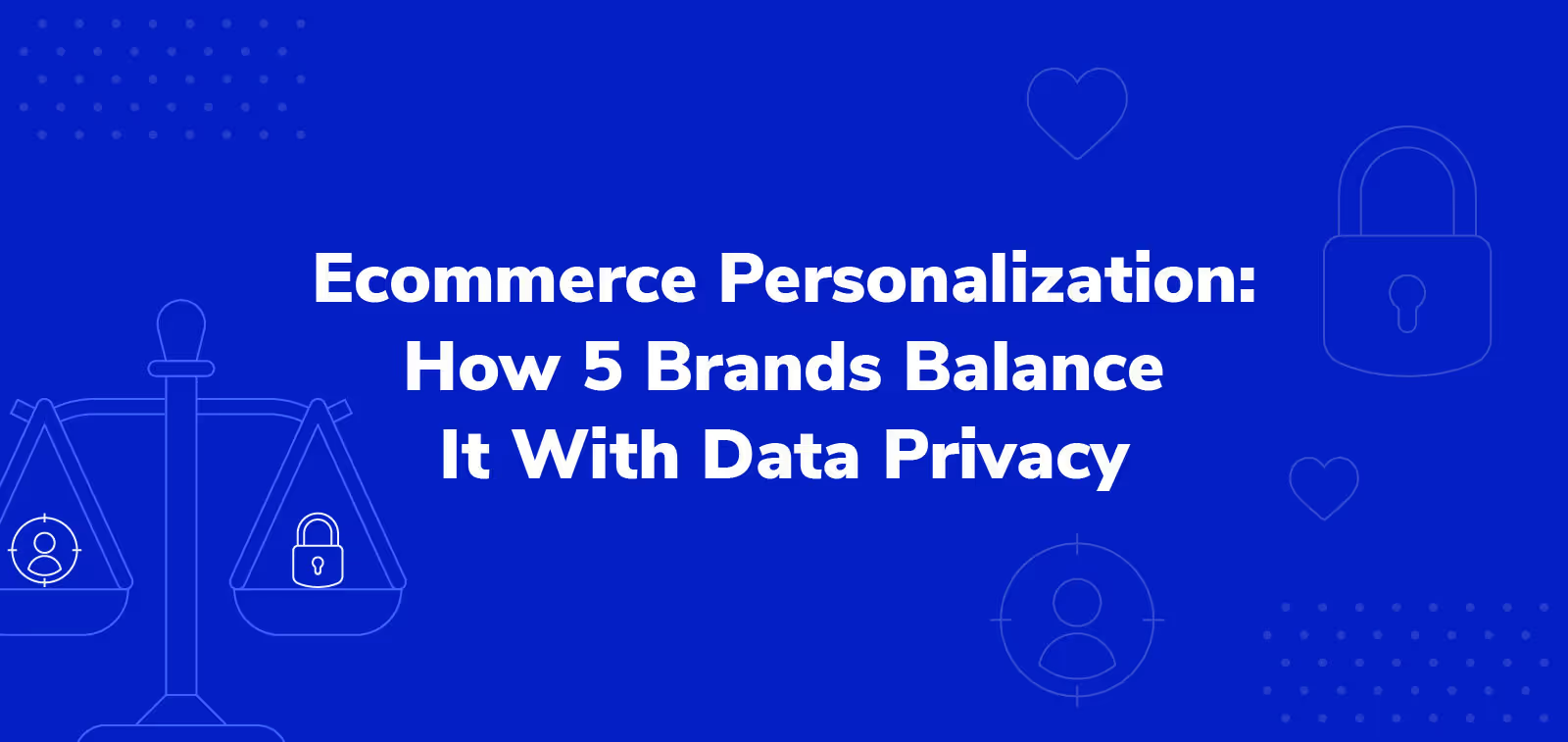Retail Shrink Is on the Rise — How Can Merchants Respond?

In the retail and ecommerce world, there’s typically a trending term or phrase that frames where the industry is going or points out particular challenges facing modern merchants. Lately, the buzzword is retail shrink, a term that’s been around for decades and shows no signs of disappearing. In fact, retail shrink, including the losses experienced by ecommerce and omnichannel retailers, is on the rise year over year. But that doesn’t mean merchants are powerless to it.
What is shrink in retail and ecommerce?
Retail shrinkage or inventory shrinkage is the difference between assumed and actual inventory. It’s calculated as a measurement of loss, and it can impact brick and mortar, omnichannel, and ecommerce retailers. It includes issues like lost, stolen, and damaged merchandise, as well as inventory loss from fraud and customer abuse.
Consider an online retailer that specializes in health and beauty products. Over the course of a year their cosmetic sales reach $100 million, but after performing inventory, they discover a loss of $5 million. Their annual retail shrink would be 0.05, or 5%.
Losses / Sales = Retail Shrink
While ecommerce shrink and retail shrink is often reported as a percentage, as in the formula above, it can also be represented in dollar amounts. That’s when reality sets in for retail leaders nationwide.
In its 2023 Retail Security Survey, the National Retail Federation (NRF) reported that the average retail shrink rate swelled to 1.6% in 2022 from 1.4% in 2021. When converted into a dollar amount based on total retail sales in 2022, the number becomes even more harrowing: $112.1 billion. In 2021, retail shrink equated to $93.9 billion in losses.
The NRF said that these figures are likely underreported because many merchants don’t have the tools to easily track and report comprehensive numbers on all lost merchandise.
What causes retail shrink?
Shrink happens due to multiple factors, and it can vary from merchant to merchant. Retailers with physical locations face different challenges than those who sell only online, but here are a few of the most common causes.
Theft
Product theft is the biggest driver of shrinkage in retail in the US, accounting for 65% in 2022, according to the NRF’s survey. That includes external theft, which accounted for 36% of total retail shrink in 2022, as well as internal theft committed by employees at 29%.
External theft includes shoplifting, robberies and break-ins, porch piracy, and organized retail crime in which individuals steal merchandise to fund a criminal enterprise. While organized retail crime is said to be on the rise, both its definition and prevalence are scrutinized by industry experts, largely because once inventory is stolen, it becomes nearly impossible to track.
Porch piracy, in particular, is a newer form of theft that continues to snowball year over year.
There were an estimated 260 million instances of porch piracy in 2022 alone, up from 210 million in 2021. This equated to just under $20 billion in loss, with retailers often on the hook to provide resolutions for customer claims — and pay for them.
Internal theft has always been an issue for in-store retailers, although with the exception of warehouse and logistics staff, it’s far more difficult for ecommerce employees to steal from an employer. Regardless, nearly half of NRF surveyed retailers (48.5%) said internal theft is a higher priority now than it was a year ago.
Ecommerce fraud
Year over year, fraud continues to be a growing problem. In fact, LexisNexis reports that as of August 2023, 60% of North American ecommerce merchants saw an increase in fraud over the previous year.
Ecommerce fraud includes account security issues like payments fraud, return fraud, friendly fraud when a customer disputes a legitimate transaction, and more. Some types of fraud contribute to ecommerce shrink, like return fraud (a customer returns used or worn items to get a refund) and fake tracking ID fraud (a customer attaches a return shipping label to an envelope or item that’s not the original product they purchased, often junk mail).
Customer abuse
Customer abuse refers to when someone takes advantage of customer-friendly policies, like ordering a shirt in three sizes just to return two of them. Customer abuse also includes empty-box returns, overuse of discount or promotional codes, and more.
While having relaxed customer policies can help a merchant attract and retain customers, plenty of bad actors are all too ready to take advantage and contribute to ecommerce shrink.
Product damage and loss
With online shopping on the rise — accounting for 22% of all American retail sales in 2022 — more deliveries are happening on a daily basis. Unfortunately, that also means more product deliveries are damaged or lost during delivery, whether it’s the result of how an item is packaged, improper handling, or lost all together during the shipping process. It’s hard to determine the true rate of package damage from shipping, but it’s estimated that FedEx and UPS have a damage rate of about 10%.
Say a customer receives a damaged package. They’re most likely to turn to the merchant they purchased from for a solution. That merchant is then faced with the decision to either replace the product — free of charge — or direct the customer to the carrier and risk losing them all together.
Operational errors
Inventory management issues, including poor adoption of technology, can plague both online retailers and physical stores. In fact, “process, control failures, and errors” — issues that take place through typical merchant operations like cashier errors, inaccurate pricing, damage, miscounting, etc. — were cited for 27% of shrink loss in 2022, according to the NRF survey.
To combat these issues, some retailers have embraced tech-forward tactics like RFID product tracking and upgraded inventory management systems for real-time data, but many continue to lag behind.
How retail shrink impacts brands
To lack real-time data and knowledge of inventory at any given moment is frustrating, but it’s not the only negative impact that comes with retail shrink.
Lost revenue
When shrink occurs, the amount of available product is reduced, sometimes unknowingly, and merchants lose money. For example, when merchandise is lost in transit, merchants are forced to send replacement items and pay for shipping costs on their own dime, reducing total revenue.
Higher costs
On top of lost sales, merchants also must manage the operational burden of intaking claims, sending replacements, and monitoring for fraudulent claims. The costs of these issues add up and eat into a merchant’s bottom line.
Damaged reputation
Consider the excitement a customer has after ordering an item they’ve been wanting for a long time. It finally arrives, but when they open the box, their coveted product is in pieces. They contact the retailer and are forced to endure a multi-day process with endless back-and-forth just to get a refund. Not only are they unlikely to return to that brand, they’re probably going to leave a negative review of their experience. In a 2020 survey conducted by the software company Higher Logic, 68% of customers said they would tell others about a bad customer experience.
But a blemished reputation isn’t the only negative outcome. These days, customers are more likely to jump ship all together and shop with a competitor after a single bad customer experience. With increased competition and customer acquisition costs on the rise, merchants can’t afford to take any hits to customer lifetime value.
What merchants can do to lessen retail shrink
Retail shrink is difficult to prevent entirely, but it can be lessened with a few proven tactics.
Improve internal processes and training
Implementing and reinforcing employee training and effective inventory management processes is a good place to start. Operational errors, in particular, can be greatly reduced through process improvement and ongoing employee training for both new and existing employees, many of whom may not be aware of the losses caused by shrink.
Increase inventory audit frequency
Many merchants perform a physical inventory audit annually, right before the year ends for tax purposes. However, with shrink on the rise, it might be a good idea to increase the frequency of inventory audits to a quarterly cycle. It may cost a bit upfront to pay staff to perform inventory, but those costs are nothing compared to what you may pay to recover from retail shrink.
Double down on security
Retailers with physical locations may benefit from added security on-site. According to the aforementioned 2023 NRF survey, 45% of surveyed retailers have added third-party security to help prevent loss.
Security may also mean added surveillance with CCTV systems and video, which can help a retailer identify and prevent theft in the future.
Reduce theft and fraud with technology
In addition to improving internal processes and training, some retailers have benefited from added technology to help reduce loss and lessen shrink. For example, exception-based reporting software analyzes transaction data to identify outliers like theft and fraud. It can help retail leaders gain a deeper understanding of their data, identify and prevent issues like theft and fraud, and improve margins.
Add Extend Shipping Protection
Ecommerce retailers can benefit greatly from modern shipping protection to help mitigate ecommerce shrink caused by loss, damage, and theft during the delivery process.
Extend Shipping Protection reduces risk, protects brands and customers from package loss or damage, and can cut costs while increasing net income. And customers want it: nearly half (46%) of all customers buying from Extend merchant partners choose to add shipping protection to their purchase.
Whether it’s added by customers at checkout, included as a loyalty program benefit, or offered as a perk for customers who reach a certain cart value, customers benefit from added protection against the unknown. If their delivery arrives damaged, is stolen, or doesn’t arrive at all, they can simply file a hassle-free claim using Extend’s 24/7 virtual claims specialist Kaley. Most claims — 98% — are processed in 90 seconds or less, turning an unfortunate (and costly) situation into a positive customer experience.
How Extend Shipping Protection reduces retail shrink
The shipping and delivery process can be unpredictable, and no one knows this better than modern shoppers. More than 3 out of every 4 Americans have experienced package theft in their lifetime, and 65% say they’re more worried about package theft now than they were a year ago. And while total loss and damage from delivery are less frequent occurrences, these issues still happen.
Extend takes on the risk associated with the delivery process so merchants can put their time and resources into other growth-focused areas of the business. Additionally, Extend handles claim intake to relieve merchants of the operational burdens tied to shipping-related issues, and retailers are, in effect, compensated for replacement products.
The value-adding benefits of Extend Shipping Protection don’t stop there.
Fraud monitoring
Extend’s AI-powered technology detects and mitigates fraudulent behavior by evaluating customer profile, identifying suspicious activities, and acting on potential threats.
Higher average order values
Shipping protection boosts profitability when added at checkout, which can boost AOV by 9% or more.
Increased lifetime value
Retailers who have offered Extend Shipping Protection have seen increases up to 13% in customer lifetime value.
Positive customer experience
Extend’s modern solution has a 96% customer satisfaction score, which helps retail partners build trust with customers.
Take control of ecommerce shrink with Extend
Whether it’s something as innocent as human error like miscounting or something more sinister like bad actors taking advantage of customer-friendly policies and stealing, retail shrink isn’t shrinking at all. How you move forward and get it under control could determine your success as a brand. Extend Shipping Protection can help.
To learn more and see how Extend Shipping Protection can work for your brand, click here for a custom demo.
Aaron Sullivan is senior content marketing manager at Extend. He specializes in writing about e-commerce, finance, entertainment, and beer.
.svg)












































.avif)











